Jersey Cattle – Everything you Wanted to Know
When our Jersey cow first arrived on our small homestead, I didn’t know much about the breed. So I started to do research. Come to find out I knew even less than I thought. Hopefully the info below will help you as much as it did me!
- History of the Jersey Cow
- Where Is The Jersey Cow Found?
- What Does a Jersey Cow Look Like?
- How Long Do Jersey Cows Live?
- Breeding Jersey Cows
- How Much Milk Does a Jersey Cow Produce?
- What Makes Jersey Cow Milk Superior?
- Temperament of Jersey Cows
- How To Keep a Jersey Cow Healthy
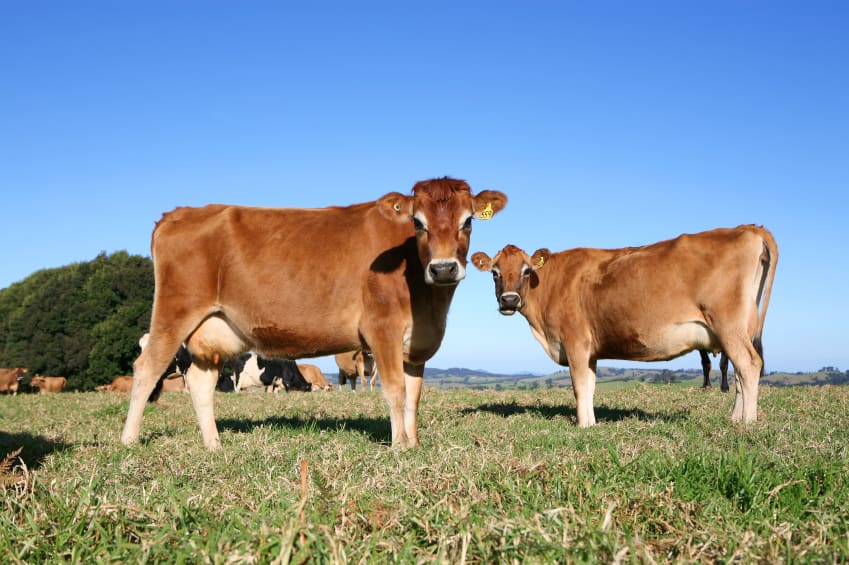
History of the Jersey Cow
The Jersey cow likely originated from the adjacent coast of France in the English Channel on the Island of Jersey. Cattle closely resembling Jerseys live in both Normandy and Brittany and first appeared on record in England in the 1740s. They are a high-producing dairy animal, yielding up to six gallons of butterfat milk daily and their meat is at the top level for its predisposition to marbling, which gives meat its flavor and tenderness. Jersey cows are the second largest breed of cows, weighing between 800 and 1,200 pounds.
Purebred Jersey cows are one of three Channel Island cattle breeds. The other two breeds are the Alderney and Guernsey, with the Alderney now extinct. It was reported to be purebred for nearly 600 years.
Analyzing the available data on the breed – phylogenetic form withstanding – reveals the domesticated forefather of modern-day Jersey cows likely came from Asia. It most closely resembles the Bos brachyceros, the genus of wild and domestic cattle that were tamed sometime during the Stone Age. Ancient ancestors of Jersey cows are believed to have migrated to Europe through Central and Southern Europe and North Africa to Switzerland and France.
Researchers and agricultural historians believe crossbreeding between the Bos brachyceros and Bos primigenius herds occurred in Northern France, altering the breed’s appearance. Jersey Island was connected to mainland France until 709 A.D. via a narrow isthmus. It would have allowed cattle to be relocated from Normandy and Brittany to the island, which likely played an important role in the development of the Jersey breed.
Jersey cows are believed to be one of the oldest breeds of cattle, with the first recorded mention of them in England in the 1740s. The breed flourished from the 1860s until World War I in countries across the globe. Early records indicate the breed was brought to America in 1657 by the early settlers. Thousands of Jerseys continued to be shipped to the United States annually after their original introduction. Canada first imported Jersey cows in 1868, with New Zealand and South Africa following suit in 1862 and 1880, respectively. Complete and accurate records for the Jersey’s immigration to Australia are unavailable. However, it is believed they first arrived in Australia as “ship cows” as early as 1829. The breed was mentioned as part of an advertisement by J.T. Palmer of Sydney, who was interested in selling 200 Jerseys.
Where is the Jersey Cow Found?
Jersey cows are the second largest breed of dairy cattle in the world today. The breed adapts well to various climates and environments, adding to its desirability. Thanks to their popularity before the First World War, the breed can be found in virtually every country in the world where dairy cattle are valued as part of the local agriculture. Jersey cows also are becoming popular among smaller homesteads for their versatility and top-quality milk production.
What Does a Jersey Cow Look Like?
Jersey cows are very distinctive in their color and presentation, making them easy to identify. They can vary from a light gray or tan to a dark fawn or nearly black shade. Their color patterns generally are unbroken, but they are known to be darker around their heads, hips, and shoulders. Some Jersey cows can have small areas of white coloring. The white areas can present as diamond-shaped patches on the shoulders or hips, to a stripe from the top of the shoulder down to the elbow. It is not unusual for white coloring to affect the legs.
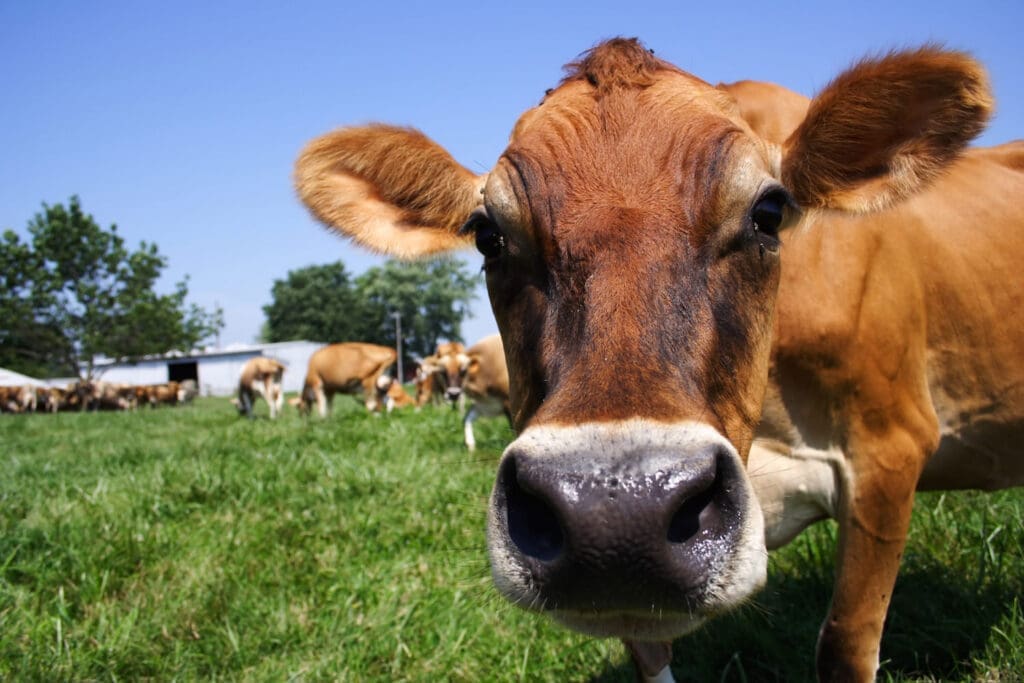
When Jersey cows are dark black in coloring, they almost always have a brown pattern on their mid-back region (from the withers to the top of the loins) that resembles a saddle. Their noses, the insides of their eyes, and the insides of each leg also are lighter in color. Bull Jerseys tend to be darker than sows from the base of their heads to their shoulders. Jerseys have dark eyes and darkly pigmented skin around their eyes and noses. Their hooves are black, and their tail-switches are dark.
Jerseys are fine boned compared to other breeds. Their angular body shape is due to the fact they are milk producers and not beef producers. They can appear quite bony compared with beef-producing breeds like Black Angus and Herefordshire. Their small stature and delicate head size give them a feminine appearance regardless of gender.
They are a naturally horned breed. As the second-largest breed of cows, Jerseys weigh between 800 and 1,200 pounds.
How Long Do Jersey Cows Live?
Jersey cows have a longer-than-average lifespan compared to other breeds. Life expectancy is based on several factors, including the conditions in which Jersey cows live. Homestead cattle that are grass-fed have longer lifespans than their grain-fed counterparts. Most cattle live between 18 and 22 years. It is not unusual for Jersey cows to live 25 years or longer if they receive proper nutrition and veterinary care throughout their lives. A Jersey cow living at an animal rescue center in the United Kingdom is the oldest-living Jersey on record at 37 years.
In general, Jersey cows tend to be healthier than other breeds. They are less susceptible to mastitis, which is one of the most significant diseases affecting dairy cattle. It causes an inflammatory reaction in the mammary gland that can cause the cow to produce less milk and cause the cow extreme pain when milking. In severe cases, it can lead to a Jersey cow’s death.
Breeding Jersey Cows
Jersey cattle reach maturity sooner than other cattle breeds, making them even more valuable to homesteads and farmsteads. Bulls become fertile around 9 to 12 months of age. The females can begin breeding as young as 8 or 9 months of age. However, most Jersey cow owners prefer to wait until their cows are around 15 months old before breeding them for the first time. Artificial Insemination is also a sought after process to control genetics.
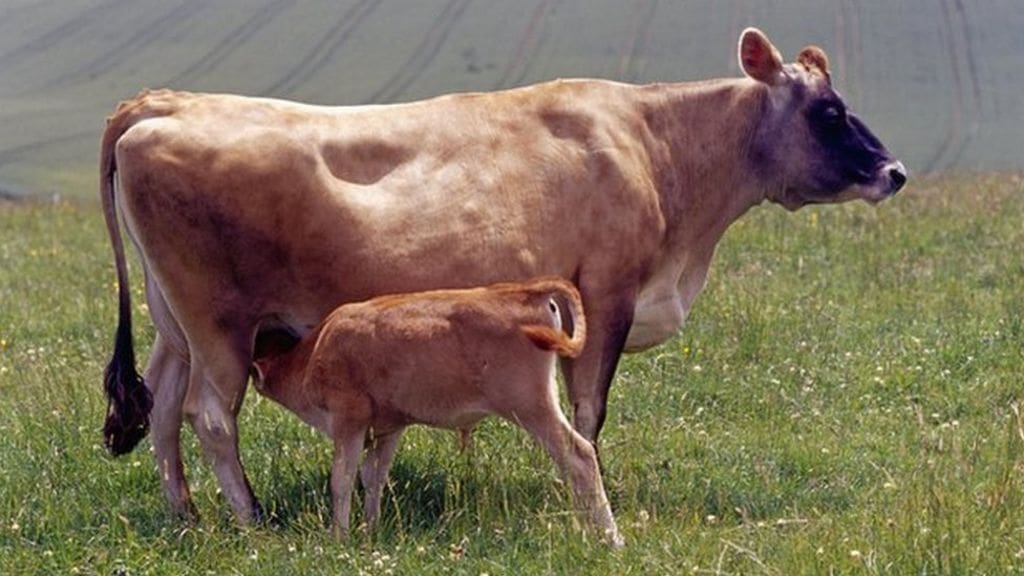
Jersey cows gestate for nine months. In addition to their earlier sexual maturity, Jersey cows have another advantage over other breeds. When calving, they experience a low rate of difficulty and experience fewer complications than other larger dairy breeds. A USDA study confirms this finding, attributing a 20 percent superiority in the number of easy calvings. Jersey cows also have easier pull calvings during the first lactation, increasing the likelihood that calves will reach healthy maturity with minimal intervention.
Jersey cows are preferred among dairy farmers and some homesteaders for good reason: they are a high-producing animal. They can yield up to six gallons of butterfat milk daily.
How Much Milk Does a Jersey Cow Produce?
Jersey cows are preferred among dairy farmers and some homesteaders for good reason: they are a high-producing animal. They can yield up to six gallons of butterfat milk daily. Some Jerseys are culled from the herd and produce less.
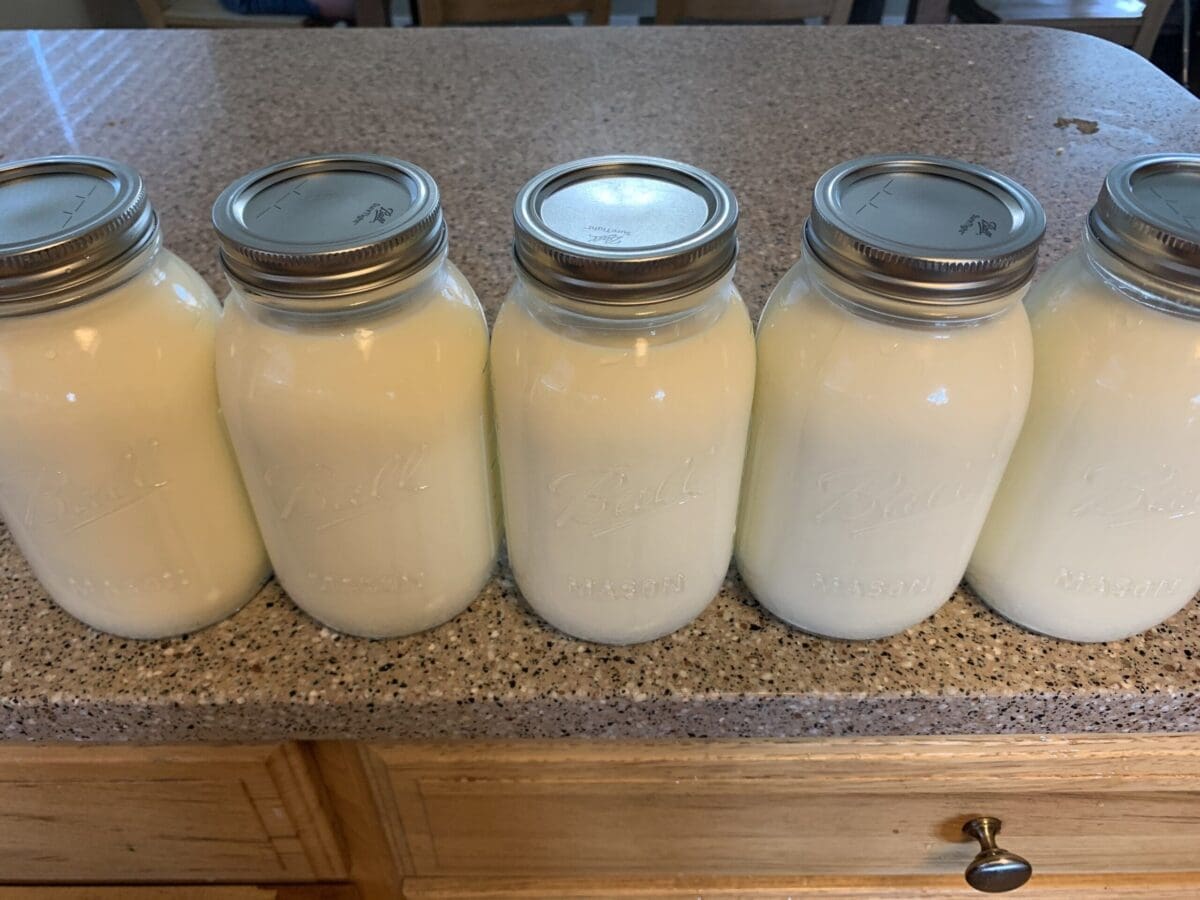
Jersey cows will need to eat between 2 and 2.5 pounds per 100 pounds of body weight to meet their daily caloric intake needs. Grass-fed cows are healthier and produce more milk, but bales of hay can be substituted as needed. The daily nutrition requirements are equivalent to one 30- to 40-pound bale of hay. Fodder also is an acceptable substitution and can be grown hydroponically to boost its healthful attributes. Salt blocks, barley grain, and alfalfa pellets also are favorite snacks for Jersey cows. Fermented barley grain has the added benefit of increasing milk production.
What Makes Jersey Cow Milk Superior?
Milk in supermarkets is generally inexpensive and abundant. It also has the potential to cause digestive issues in some consumers. About 68 percent of the world’s population is lactose intolerant. That means they have a reduced ability to digest lactose after infancy.
Pasteurizing milk, which is the preferred method of consumption in the United States, can kill some important and nutritive qualities of milk. For instance, Vitamin C is plentiful in raw milk but destroyed during the pasteurization process.
When consumed raw, Jersey cow milk is packed with nutrients. One cup of whole cow’s milk contains 146 calories, 8 grams of protein, and 8 grams of fat. Seven vitamins and minerals – including those labeled nutrients of public concern – are found in each cup.
Jersey milk cow products provide the most nutrition per unit of volume. A person would need to consume the equivalent of 9.64 ounces of low-fat milk from a Holstein cow to equal the same amount of nutrition found in 8 ounces of Jersey cow milk.
Temperament of Jersey Cows
Female Jersey cows are mild-mannered and even-tempered. Their friendly disposition means they bond well with humans and can feel more like family pets than milk-producing assets. Farmsteads and homesteaders will find the females are well behaved and do not resist milking. The risk of being kicked by a female Jersey during milking is low. Jersey bulls, on the other hand, are prone to aggression once they reach 18 months of age. While they may look cute and cuddly, it is best not to turn your back on them.

How to Keep a Jersey Cow Healthy
As with other agricultural animals, Jersey cows will produce according to their overall health and well-being. Part of maintaining optimal health for a Jersey cow involves meeting the following criteria:
- Each Jersey cow requires 2 to 5 acres of land for grazing
- Access to fresh water is crucial to quality milk production and a healthy animal
- Jersey cows require adequate shelter from the elements
- Ensure cows are milked daily to keep mammary glands healthy. Milking or “stripping” the cow completely of her milk will ensure she does not develop mastitis
- Regular visits from a large-breed veterinarian familiar with Jersey cows
In our kitchen, we only use cultures from Cultures for Health.
Get yours here and start culturing today.
Popular Articles
Newsletter
Get signed up to get latest updates and new information from the Jersey Milk Cow!
Comments (10)
Leave a Reply Cancel reply
This site uses Akismet to reduce spam. Learn how your comment data is processed.

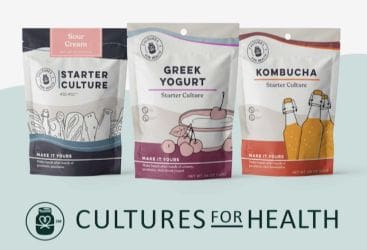
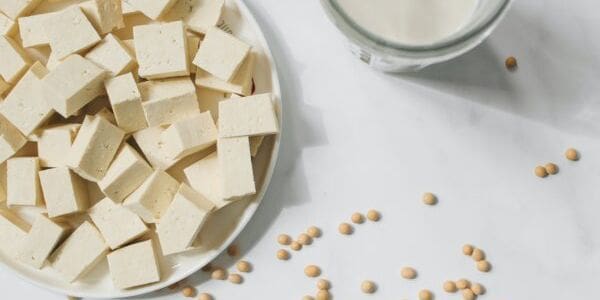
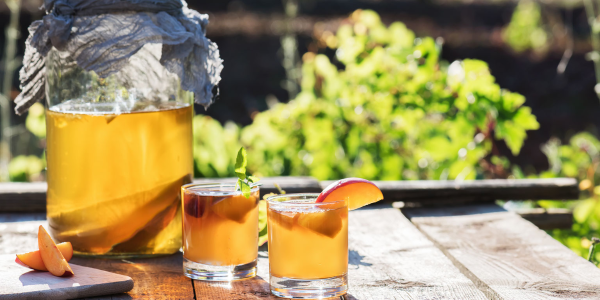
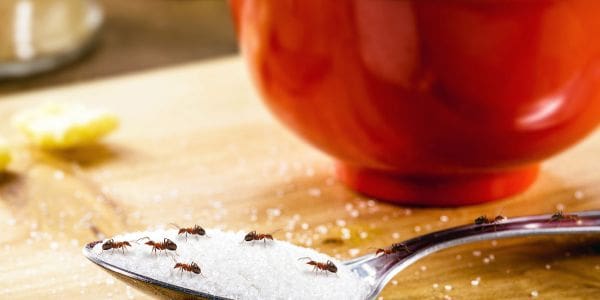
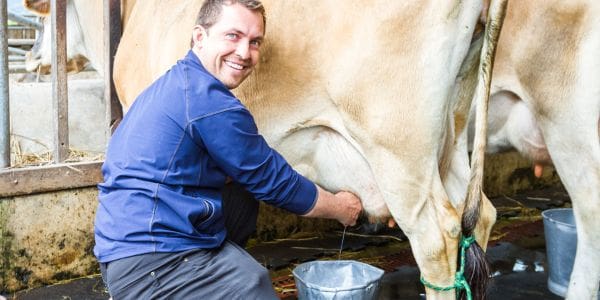
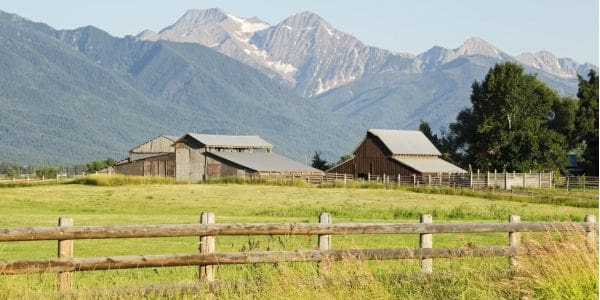

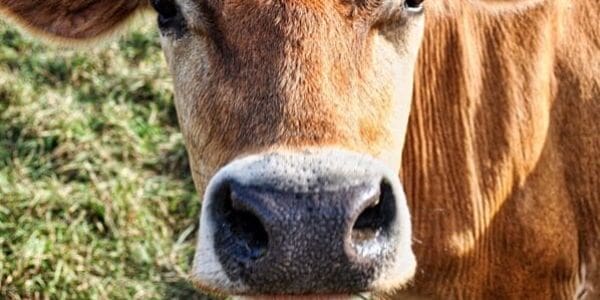
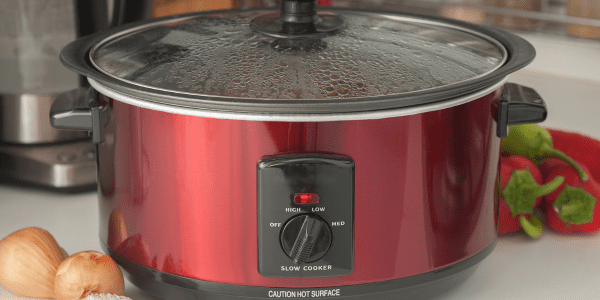


Hi Kelsey, We are buying a pregnant Jersey and would like information on how to care for our cow and calf holistically. We would like the milk to be as organic as possible. Also, although we have many acres of grazing on our property, the ground is not covered in beautiful green grass. Rather it is an assortment of dry shrubs mixed with different types of grasses and weeds. We currently let our neighbors Angus graze here and they do just fine. What would you suggest for our Jersey?
Hi Jennifer! Thanks for your comment. Congrats on getting your Jersey! I would suggest good alfalfa hay. We have a field that doesn’t have much to offer as far as grazing, so most of her food comes from feeding hay. We try to buy it from reputable sources who do not use Round Up or GMOs. We also supplement with fermented barley grain. The fermentation breaks down the lactic acid in the grain and is easier for the cow to digest while still providing lots of calories. Also, a good probiotic is always a good idea. Hope this helps!
Hi Kelsey,
My sister and I are in the process of convincing our parents on a Jersey. But, the say that they eat so much, and there’s really no profit from them. What are the main pros of having a Jersey?
Hi there! First, I might be biased. But there are many pros to having a Jersey. Of all the dairy breeds, they eat the least. Sure, they’re cows so its all relative, but hey! You won’t be feeding a holstein!
Also, you can make money with them as well. The milk you get will offset the cost of having to purchase your own. If you and your sister are “go getters” and make the extra milk into cheeses, butter, kefir, yogurt etc., then you can really offset your grocery costs. The money you get from selling these or saving from having to purchase them, will pay or more than pay for the feed your cow needs.
Also, if you decide to sell milk or start a cow share option, then you could potentially sell your extra shares/milk for $10 to $12 a gallon. You can do the math but I would venture to guess you would be in the green. If you’re a family of 12, then you might be drinking all of it, but if you’re a small family, you will definitely have leftover milk to sell. We are a family of 7. This comes out to about 8 gallons a week for us. Our cow gives about 4 gallons per day. So that is about an extra 20 gallons we can offer in our cow share program. About $200 a week. Plus milking is fun!
Also, any calves you get you can sell or process for meat. Again offsetting any grocery costs.
The ideas are endless if you think hard and work hard. I’m rooting for you all the way!
Are Jersey Dairy cows either standard size or mid size or mini’s still prone to milk fever and ketosis? I have heard that this is a problem but maybe it is for a high producing standard one. Any tips to prevent and or alleviate the problem?
Are All Jersey cows also A2/A2 ?
Hi Laura! No, not all Jersey’s are A2/A2. That is why knowing the breeding before you buy is important.
Hi Kelsey,
How do I know if the Jersry I’m buying is A2
Hi Robert,
You will have to it tested. Usually a hair sample. You can use UC Davis to do this test.
Someone I know is wanting to give me a bottle raised very tame jersey cow, but she is 5 years old and never bred. Do you think I will have issues with her breeding? She is so lonely and wants to breed and is constantly getting out because she is yearning to do her job instead of being a yard pet. Is she too old to breed for first timer?